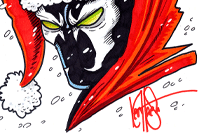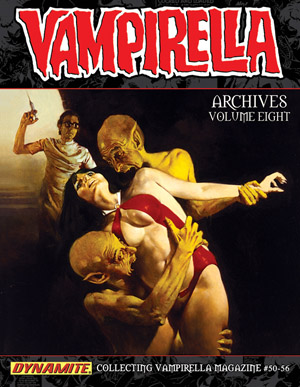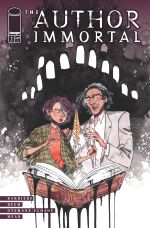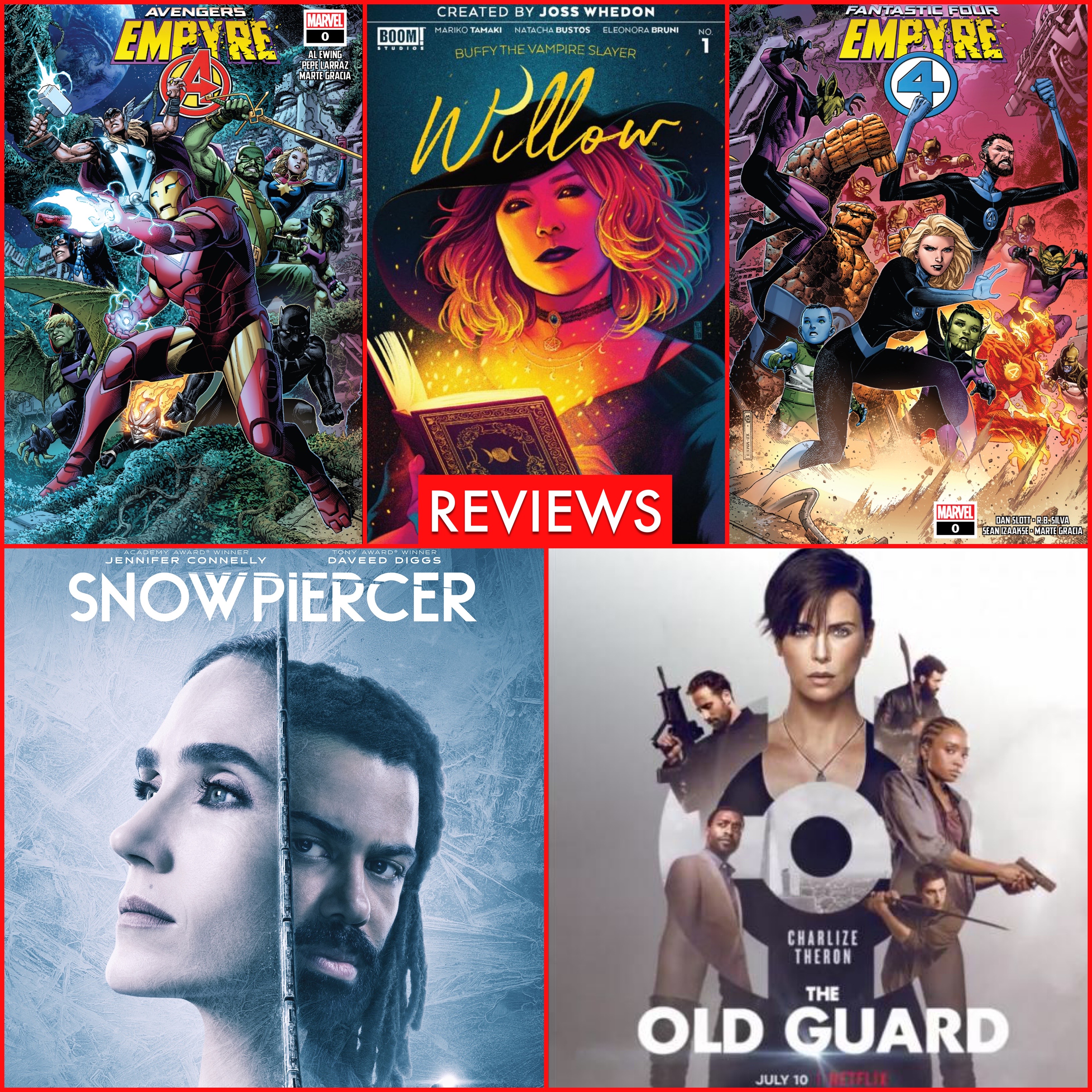|

|
JERRY ORDWAY
 SEND THIS TO A FRIEND! SEND THIS TO A FRIEND!
DF Interview: Jerry Ordway, Part 1: From ‘70s fanzines to the death of Superman By Byron Brewer His career has known highs and lows, from a humble beginning in the ‘70s fanzines to helping take pop culture icon Superman to the cover of the prestigious Time magazine. Such has been the world of artist/writer/comics legend Jerry Ordway. Recently Ordway has become an outspoken critic of ageism in the comics industry, saying that just because a talent has left a great legacy does not necessarily mean the need for a paycheck has ended. To look at this and a lot more, Dynamic Forces sat down with Ordway for a fascinating two-part interview. If you are a fan of the man or any of his material, this interview is a must, believe me. And while you are at it, tell your friends, FB buds, and the gang at the comic shop. Here is what Jerry Ordway told us. Dynamic Forces: Jerry, I have always wanted to interview you because, oddly enough, we began about the same time in the 1970s with Tim Corrigan’s fanzine. Our strips were in the same issue. I went to journalism, you went on to comic book fame. But tell us, what if anything ever happened to your early character, the Messenger? Jerry Ordway: Well, I have continued to create Messenger stories over the years, for Action Planet Comics, (Mike Manley’s publishing imprint in the 1990’s) an Image comics edition, and self published versions. I’m hoping to get new material out soon as well. I revised my earlier fan version, which was much more super-hero based, into a darker spy story. Years back, when I told Gil Kane about it, he said it was The Fugitive crossed with The Invaders, both TV shows from my childhood. The concept involves the main character being able to read minds, which sets up the more science fiction/ aliens on Earth aspects of the storyline later on. I was kind of stunned to admit he was right. I loved both “The Fugitive” as well as “The Invaders.” We all draw from the same well, so to speak, our early influences. DF: I know about your Tim Corrigan submissions. Tell us about some other efforts of the very early days before your entry into pro comic books. Who is Acrobat? Jerry Ordway: Well, starting in 1969, I created a bunch of my own super-heroes, and drew comics featuring them, as if I was Marvel Comics! I did everything, including color, right on the 6x9” booklet. Each one was one of a kind, not printed. The Acrobat was my Daredevil knock-off. The first time I realized comics were drawn larger, on heavy paper, was when I saw my first piece of original art, a page from a Gil Kane issue of Captain Action. At first, I felt like I was swimming in the ocean, as the 10x15” area was so big compared to drawing printed size, but I adjusted after a short time. Around the time I learned that, I got involved with Tim Corrigan’s Superhero Comics, via an ad in the classified section of Marvel Comics. Tim agreed to publish the Messenger, in 10 page stories, I believe. In those fan days, fanzines were published on an erratic schedule, due to the fact that people usually had real jobs, or school. When I got ahead of Tim’s schedule, I decided to publish my own fanzine, and created a new hero for it, called “Proton,” who was an alien who crash landed on Earth. My imprint was Okay Comix with the “O” representing Ordway, and the “K” representing my pal Dave Koula, who drew his own feature in there called The Rooming House, a situation comedy. I published two issues while in high school, and moved on to the working world after graduation, with less time for drawing comics. I still worked on fan stuff, but publishing was too much workload. In that time frame, in the mid 1970’s, I met Mike Machlan, and started working through the mail with Steve Clement, an ambitious guy who wanted to be the Marvel Comics of fandom, with Interfan. Fans from all over worked on other fans stories, and I did some inking, some lettering, and not too much penciling. I inked and designed the logo for Thunder Bunny, which Martin Greim created, and that one lived on for many years, making a jump into the pro comics world with other artists. I also drew another Messenger story that wound up being published in the 80’s by Bill Black as part of his Americomics line. DF: What was your first professional work? I believe it had something to do with a Marvel superheroes stamp book? Jerry Ordway: Out of high school, I worked as a typographer in a shop that set ad copy for agencies. I learned a lot of practical skills there, which helped me get my next job at a commercial art studio in downtown Milwaukee in the late 1970’s. There I started in the stat department, and slowly worked my way up to a drawing board. That’s where I got pulled back into comics, oddly enough. One of the studio’s clients was Golden Books, which published puzzles, games, and coloring books. They were frustrated at having to use clip art from Marvel and DC for their stuff, and the art studio saw me as a person who could draw in the comic book style, and get approvals from the New York comic publishers. So I drew a DC coloring/activity book, and Golden books immediately offered another project involving the Marvel heroes. It was a four book boxed set with coloring pages, puzzles, spelling and simple math. During this time, I had attended the 1980 Chicago Comic Con , where DC was advertising a new talent search. I took my coloring book samples, and, after waiting in a crowded, hot hallway for all of Saturday, I was stunned to have Paul Levitz recognize my work, and hire me. He had been the person at DC who approved my coloring book art! So, while maintaining a full time job, I took on a few short comic ink jobs in the late summer, and fall of 1980. The first one was inks over Carmine Infantino, who was drawing in a highly stylized way then. I did my best, and they sent me more. I inked a Trevor Von Eeden story about kids in a video game arcade, and two War that Time Forgot stories, over Bob Hall, and Dave Cockrum pencils. DC was happy with the work, and called to offer me inks on Teen Titans, but I didn’t want to quit my day job. Later, they called again, and offered All Star Squadron, and I accepted. I started my freelance career in February 1981, and am still at it. DF: Jerry, you worked or co-owned several art studios before becoming a full-time comics artist. When was that point when the comic book work alone brought in the bacon, so to speak? Jerry Ordway: Well, the 9-5 jobs out of high school were full time, though I was paid better by the advertising art place. I never struggled in comics. I went with DC in that first year, with a contract that guaranteed me 25 pages of finishes per month, so I was doing fine. I lived with, and helped out my mother then, and we always had bacon for Sunday breakfast. Seriously, I was working hard, but the rewards were there. Back then, I paid maybe twelve dollars a month for my health insurance, and the self employment taxes weren’t as high as they are now, so I was happy. DF: You started as an inker in earnest with DC, and the artists you have inked reads like a who’s who of comic book royalty: Kirby and Ditko, Cockrum and Infantino. Tell us about those days. Jerry Ordway: I was never satisfied as only an inker, but I had a lot of fun opportunities to ink my heroes. On All Star Squadron, I did finishes on Rich Buckler, Adrian Gonzales, Don Heck, Wayne Boring, and even George Perez. For a brief stint, I jumped to Marvel to ink John Byrne on Fantastic Four, before returning to DC to ink Crisis from issue 5-12. I didn’t get to ink Kirby or Kane or John Buscema until the 1990’s, but I got to chat with Kirby and Kane at comic shows in the 80’s. Also struck up a friendship with Jerry and Joanne Siegel in the mid 80’s. We were pen pals until they both passed. DF: When you helped John Byrne and Marv Wolfman revamp the Superman character for a new generation, your career skyrocketed. You eventually became a writer on some of Supes’ books. How did that unfold? Jerry Ordway: Well, Dick Giordano was in many ways a father figure to me at DC back then, as one of the head honchos, and he wanted me on the relaunched Superman books. For me, it was a promotion, working on Superman. I didn’t know who I was to be teamed with, though. At one point, the editor, Andy Helfer had hoped to have different teams on the three titles, with me drawing from Alan Moore scripts. Well, I guess that fell through, and it was Marv and me. It’s all ancient history now, but at the time, the collaboration with Marv was pretty bumpy, and after a year, his contract on Superman wasn’t extended, so Byrne took over. I knew John from the time on Fantastic Four, so that collaboration was a lot of fun. He and Helfer seemed to like the story ideas I tossed into plotting sessions, and John added me as co-plotter, even on issues I had less to do with. When Mike Carlin joined the DC staff, about 4 issues into the relaunch, he and I got along great as well. By the time Byrne quit the book, I was last man standing, and Carlin asked me to write the book. He basically hammered me into a writer by my third story, and I follow those lessons to this day. I still remember one criticism that he tossed at me during my first writing job— “You’re an artist—why do you have to write so much damn copy?” And so, I learned to edit myself from then on, and achieve a good balance of balloons per page:) DF: One of the all-Ordway stories I remember best was the one in which Clark Kent actually (no “imaginary story”) proposed to Lois Lane. A great iconic comics moment. Thoughts? Jerry Ordway: Well, at the time of that storyline, the other writers were Roger Stern and Dan Jurgens, and we had all wanted to soften Lois a bit from the harshness Byrne has instilled in the relaunch. Why was Clark interested in her if she was such a pain, you know? So our mission was to focus on her, and show her as more dimensional, even having her romantically involved with Jose Delgado (Gangbuster) while Clark was with Cat Grant. Their time apart made them look at each other in a different way, with Lois realizing she was harsh on Clark because she really liked him deep down. So anyhow, the engagement idea was mine, with the idea she would turn him down, without prejudice. (smiles) He could ask again, she just wasn’t ready then. So there I was, writing the plot and I just thought, “Why not have her accept? They could have a long engagement, even break up if the reader reaction was terrible, or the story idea didn’t pan out.” So I made my case to Carlin, and I could see his brain working on it, until he picked up the phone and called Roger, whose Action Comics was the book that followed mine. “Roger, we’re getting them engaged!” So Roger then got to do the secret identity reveal, because Clark wouldn’t lie to his fiancée! We worked like that a lot, planning one thing way in advance, and then turning it on its head when doing the issue. It was a very organic way to work, and DC gave us a lot of leeway to tell the most interesting character stories. DF: The “Death of Superman” storyline will never be forgotten for those of us who were readers at the time. Tell us of your part in that, and the immediate fallout. Jerry Ordway: Well, this relates to the previous comments on being organic in our process. We had planned out the whole wedding and honeymoon arc at our story conference early that year 1992, well in advance of publication dates. We charted ideas up to a year away. Word came down that the Lois and Clark TV show was on Warner’s to do list, and having Lois and Clark married might impact the TV show. Also, if the show was successful, we could plan the wedding for the show and comics at the same time to get an additional sales boost. Remember, the Superman comics sold 70 percent of their numbers on the newsstands, with only 30 percent sold in the direct market back then. So we were always frustrated at the lack of interest in the comic stores for our stuff. At the meeting, hastily adjourned, the creative teams had to come up with a new plan for the year’s output. We were pretty pissed, I’ll admit. DC had not interfered with us up to that point, and we were tasked to throw something new together on the spot. Anyhow, ideas are thrown into the mix by various creators, and nothing was well received. Jurgens came to the meeting to lobby for a big knock down drag out fight, like Marvel Comics excelled at—a big Kirby action story, Superman fighting a physical threat to save Metropolis. It got nowhere with the group, as it really wasn’t the type of story we generally did. We liked to do the character stuff, the inter-personal stuff. So after more talk, with no other good ideas coming forth, Dan pitched his idea again, and I helped sell it to the group by stressing it as our opportunity to show how a fight like this impacts on people whose apartments, or houses are destroyed, whose loved ones are killed. What happens after? No one really did that to the extent I wanted to see. In comics a city would be destroyed, and the next issue there was no sign of hardship or damage. It’s what I think of as the Michael Bay style now, where you’re not supposed to think too hard on the horrific casualties that must occur when a city block is leveled. Well, the room was suddenly alive, and the idea of the mysterious villain pounding his way out of a tomb, “Doom, doom, doom” was bandied about. Mike Carlin says “Doom—Doomsday is coming for Superman!” We had something, then. We wanted the villain to be someone new, to show up out of the blue, someone that the readers had no preconceived notions about. Lex Luthor would feel cheated of the honor of killing Superman, propelling his storyline afterwards. I’ve been credited by others as the one who suggests killing Superman, but I think they’re remembering me joking at past meetings. At previous story conferences, we’d have to face a lot of blank sheets of paper on the wall, to fill-in with ideas for the four Superman titles, and we couldn’t relax until we filled all the slots. So I used to have Carlin write in on the last boxes, “Everyone dies. The end” to give us a head start, as a joke. When the Doomsday ideas were flying around, I think someone referred to that, saying “Superman dies. The end.” And then that idea got chewed and finally accepted, to tell the “world without Superman” stories. Dynamic Forces would like to thank Jerry Ordway for taking time out of his busy schedule to answer our questions. Next up: Part 2 of our interview with Mr. Ordway!
NEW! 1. 09/23/2025 - FRANK BARBIERE2. 09/16/2025 - RODNEY BARNES 3. 09/10/2025 - ZACK KAPLAN 4. 08/26/2025 - JOE PRUETT 5. 08/20/2025 - CHRISTIAN WARD Show All |
 |







